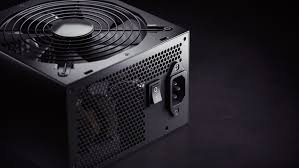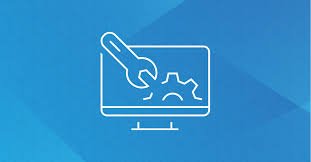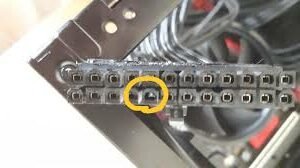There’s nothing quite as frustrating as hitting the power button on your computer and being greeted with silence. If your power supply isn’t turning on when connected to the motherboard, you’re likely feeling a mix of confusion and concern.
If the power supply doesn’t turn on when connected to the motherboard, check for loose cables, ensure the power switch is on, and verify that the motherboard isn’t damaged.
In this article, we will discuss “Power Supply Not Turning On When Connected To Motherboard”.
Understanding the Basics:
What is a Power Supply?
A power supply unit (PSU) is a critical component of any computer. It converts electrical power from an outlet into usable power for the internal components of the computer. Without it, your PC is just a fancy paperweight.

Role of the Motherboard in Power Distribution:
The motherboard is the central hub that connects all the components of your computer. It distributes power from the PSU to various parts of the system, including the CPU, RAM, and other peripherals. Any disruption in this power distribution can prevent your computer from turning on.
Initial Troubleshooting Steps:
When your power supply isn’t turning on, the first steps are often the simplest yet most overlooked. Start by checking all power connections.
Ensure that the power cable is securely plugged into both the PSU and the wall outlet. Verify that the power switch on the back of the PSU is in the “on” position.
Read: Are Gigabyte Motherboards Good – Ultimate Guide – 2024
Inspecting the Power Supply Unit (PSU):
If everything is connected correctly and the power switch is on, the next step is to inspect the PSU itself. Look for any obvious signs of damage, such as burnt smells, frayed cables, or visible burns.
If the PSU shows any of these signs, it might be faulty. Testing the PSU can help determine if it’s the source of the problem.
You can use a paperclip to perform a simple test: unplug all cables from the motherboard, insert the paperclip into the green and any black pin on the 24-pin connector, and see if the PSU fan spins up.
Read: Am4 Motherboard Tier List – Ultimate Guide – 2024
Motherboard and Power Supply Compatibility:
Compatibility between your motherboard and power supply is crucial. Ensure that your PSU meets the power requirements of your motherboard.
Sometimes, the issue might be as simple as an incompatible power supply. Check your motherboard’s manual for specific PSU recommendations.
Read: Do All Motherboards Have Wifi – Comprehensive Guide – 2024
Checking Connections and Cables:
Ensuring the 24-pin Connector is Secure:
The 24-pin connector is the main power connector for the motherboard. Ensure it’s fully seated and locked in place.
Verifying Additional Power Connectors:
Don’t forget the 4-pin or 8-pin CPU power connectors. These are crucial for the motherboard to distribute power properly.
The Role of the CMOS Battery:
The CMOS battery, though small, plays a significant role in your computer’s power functions. It maintains the BIOS settings when the computer is off.
A dead or weak CMOS battery can sometimes cause power issues. Replacing the CMOS battery is a simple fix that might resolve the problem.
Read: What Are Motherboard Power Stages – Ultimate Guide – 2024
Testing with a Multimeter:
A multimeter is a handy tool for diagnosing power issues. You can use it to check the voltage output of your PSU.
Set the multimeter to the appropriate voltage range, connect the probes to the power supply connectors, and compare the readings to the PSU’s specifications.
Read: New Motherboard Wifi Not Working – Ultimate Guide – 2024
BIOS and Power Supply Issues:
Sometimes, BIOS settings can interfere with the power supply. Resetting the BIOS by removing the CMOS battery for a few minutes can reset these settings.
Additionally, ensure your BIOS is up to date, as outdated firmware can cause compatibility issues with newer PSUs.
Common Motherboard Issues:
If the power supply checks out, the motherboard might be the culprit. Signs of motherboard issues include burnt or swollen capacitors and visible damage.
Testing the motherboard with another power supply or testing your PSU with another motherboard can help pinpoint the issue.
Read: How To Check If SSD Is Compatible With Motherboard – Guide 2024!
Importance of Proper Grounding:
Proper grounding is essential for any electrical system. Ensure your computer setup is properly grounded to prevent electrical interference and potential damage.
Grounding issues can sometimes cause the power supply to fail to turn on when connected to the motherboard.
Environmental Factors:
Environmental conditions like temperature and humidity can affect your computer’s performance.
Excessive heat or moisture can damage components or cause electrical interference. Ensure your computer is in a cool, dry place to prevent these issues.
Advanced Troubleshooting Techniques:

If basic troubleshooting doesn’t solve the problem, consider advanced techniques. Swapping out components like the PSU or motherboard can help identify the faulty part. If you’re not comfortable doing this yourself, seeking professional help is a wise option.
Why is my PC not turning on but the motherboard has power?
If your PC isn’t turning on but the motherboard has power, check the power button connection, ensure all components are seated properly, and look for any damaged parts. Also, check the RAM and CPU connections.
Why is my PC power supply not turning on?
If your PC power supply is not turning on, check if the power cord is plugged in, the switch is on, and the outlet works. Also, ensure the power supply is properly connected to the motherboard.
How to tell if power supply is bad or motherboard?
To check if the power supply or motherboard is bad, try using a different power supply. If the PC still doesn’t turn on, the motherboard might be faulty. If it works, the original power supply is likely bad.
Can motherboard affect power supply?
Yes, a motherboard can affect the power supply. If the motherboard has a short circuit or is damaged, it can prevent the power supply from working properly, causing the PC to not turn on.
Power Supply Not Turning On When Connected To Motherboard Windows?
If the power supply doesn’t turn on when connected to the motherboard in a Windows PC, check for loose cables, ensure the power button connection is secure, and verify the motherboard and power supply are working correctly.
How To Check If Motherboard Is Receiving Power?
To check if the motherboard is receiving power, look for lights on the motherboard and see if the fans spin when you press the power button. If nothing happens, check power connections and try a different power supply.
Motherboard Not Turning On?
If the motherboard is not turning on, check for loose power connections, ensure the power supply is working, and verify that the power button is connected correctly. Also, inspect for any visible damage on the motherboard.
New Psu Not Turning On?
If a new PSU is not turning on, check if it’s properly connected to the motherboard and power outlet. Ensure the power switch is on and all cables are secure. If it still doesn’t work, the PSU might be defective.
Msi Power Supply Not Working?
If an MSI power supply is not working, ensure it’s correctly installed and connected to the motherboard and power source.
Check for any visible damage and try using it in a different system if possible. If it still doesn’t work, contact MSI support for assistance.
Psu Working But Pc Not Turning On?
If the PSU is working but the PC isn’t turning on, check for loose connections, ensure the power button is functioning properly, and inspect for any damaged components. Try resetting the CMOS and testing with a different power supply if possible.
Motherboard Not Getting Enough Power?
If the motherboard isn’t getting enough power, check if the power supply is sufficient for the system’s requirements.
Verify all power connectors are properly connected and not loose. Inspect for any damaged cables or components that could be hindering power delivery.
24-Pin Connector Not Working?

If the 24-pin connector is not working, ensure it’s securely plugged into both the power supply and motherboard. Check for any bent pins or damage on the connector. Try using a different connector or power supply to see if the issue persists.
FAQs:
1: Why won’t my PC turn on when connected to the motherboard?
If your PC won’t turn on when connected to the motherboard, check for loose connections, ensure the power supply is functioning, and troubleshoot for any potential motherboard or component issues.
2: What should I check if my PC doesn’t boot after assembly?
If your PC doesn’t boot after assembly, check if all components are properly connected, ensure the power supply is switched on, verify RAM and CPU seating, and troubleshoot for any potential hardware issues.
3: How can I diagnose a motherboard power issue?
To diagnose a motherboard power issue, first, ensure all connections are secure. Test the PSU with a multimeter, check for visible damage on the motherboard, and try booting with minimal components.
4: My PSU passes the paperclip test, but my PC won’t boot. What could be wrong?
If your PSU passes the paperclip test but your PC won’t boot, check for faulty components like the motherboard, CPU, or RAM. Also, ensure all connections are secure and troubleshoot for any potential issues.
5: What are the steps to reset CMOS?
To reset CMOS, first, power off the computer and unplug it. Locate the CMOS battery on the motherboard, remove it for a few minutes, then reinsert it. This resets BIOS settings.
6: Can a faulty power button cause the PC not to start?
Yes, a faulty power button can cause the PC not to start. If the button is damaged or not functioning properly, it may not send the necessary signal to power on the system.
7: Why is there no display output despite the PC appearing to power on?
If there’s no display output despite the PC powering on, check if the monitor is properly connected, ensure the graphics card is seated correctly, and troubleshoot for potential issues with the GPU or drivers.
8: My motherboard doesn’t come with a diagnostic speaker. How can I troubleshoot without it?
Without a diagnostic speaker, troubleshoot by checking for visual cues like LED lights on the motherboard, observing fan activity, and testing components individually to identify potential issues.
9: Could a dead motherboard be the cause of the power issue?
Yes, a dead motherboard could be the cause of a power issue. If the motherboard is damaged or not functioning, it can prevent the power supply from supplying power to other components.
10: What should I do if my PC won’t boot even after troubleshooting?
If your PC won’t boot after troubleshooting, consider seeking professional help. A computer technician can diagnose and repair more complex issues that may be beyond your expertise.
Conclusion:
In conclusion, if your computer’s power supply isn’t turning on when connected to the motherboard, don’t panic. Start with simple checks like cable connections and power switch positions. If problems persist, inspect components for damage and ensure compatibility between parts. Consider seeking professional assistance for complex issues.
